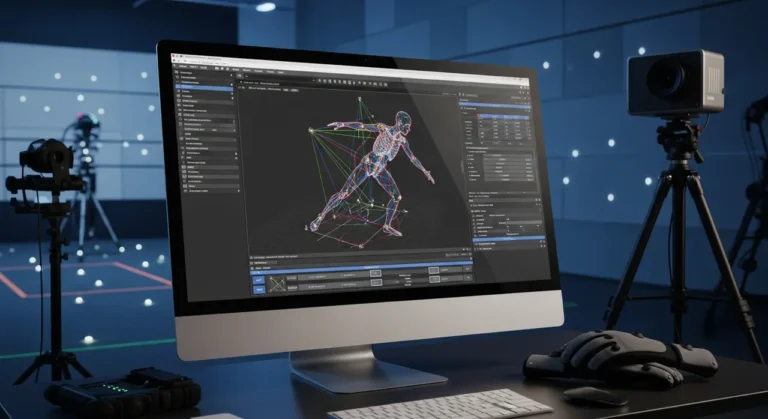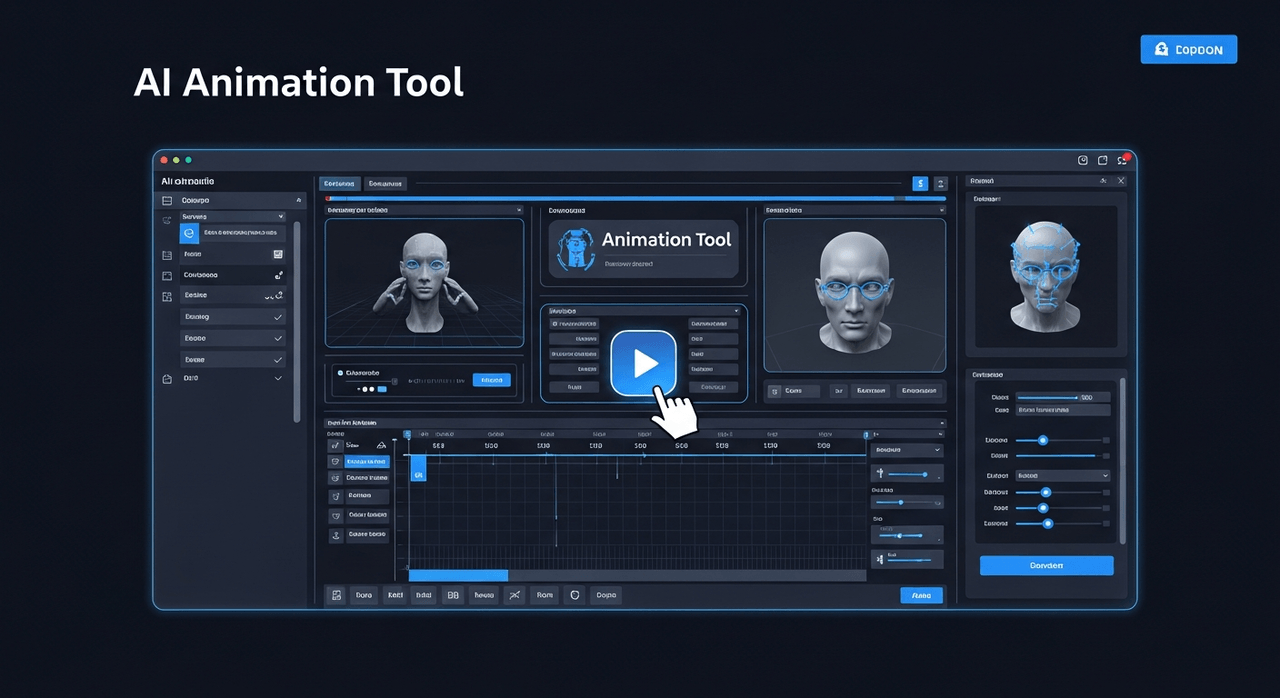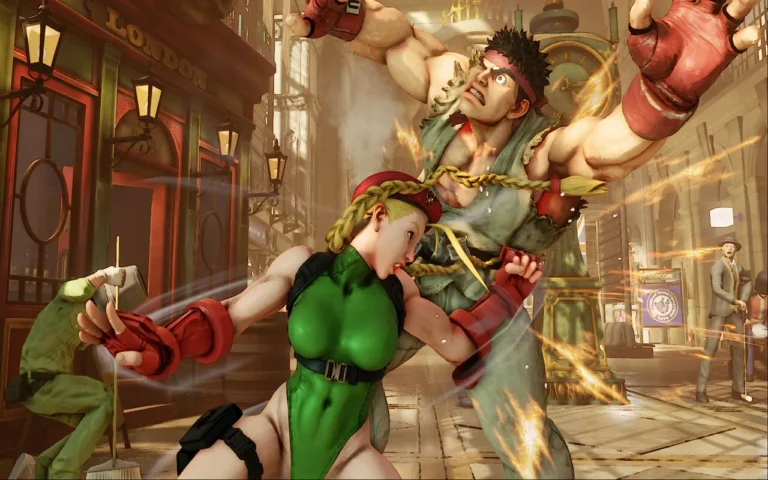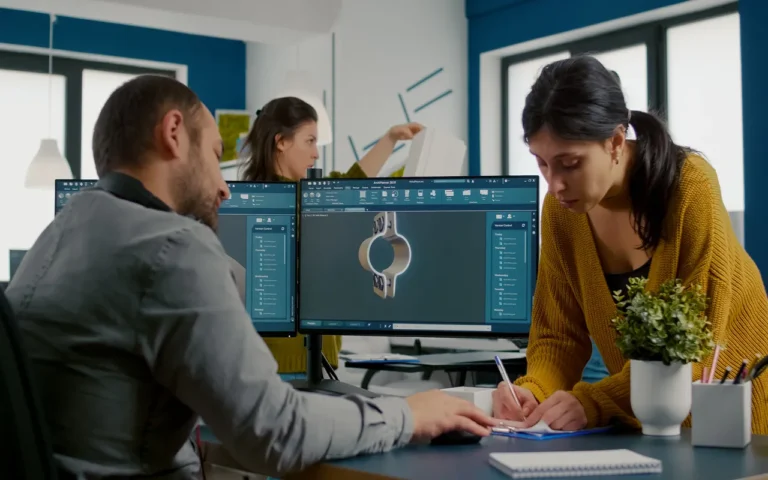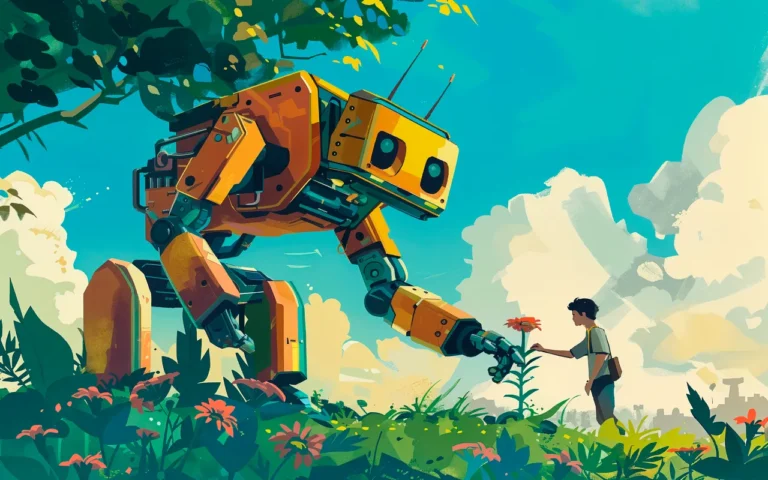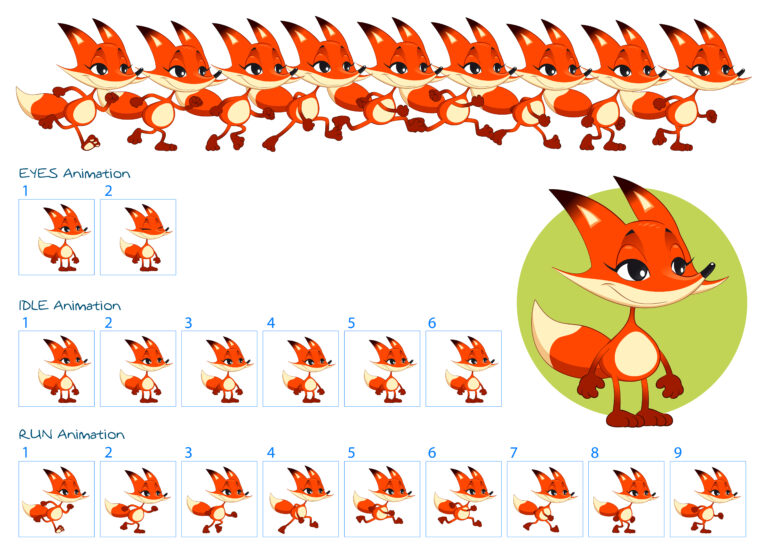Just imagine it. An artist works for days and then hits “render.” But after six hours, they see bad lighting that ruins everything. This nightmare has happened every day to tens of thousands of creative people since they had to wait forever, get poor results, and then start all over again.
Even worse is that artists stop having great dreams and start to play it safe when every test takes hours and changes cost so much time. For studios offering professional animation services, these delays can make production costly and creativity limited.
However, what if I told you that those annoying times are over? What if artists could see the finished product right away as they work?
That’s exactly what happened when Unreal Engine 5 changed animation for good. In this article, we’ll see how real-time rendering works, why UE5 became the game-changing solution, and how you can get to this exciting road yourself.

Need Animation Services?
Visit our Animation Service page to see how we can help bring your ideas to life!
What Is Real-Time Rendering?
Real-time rendering is like having an animated magic mirror. As soon as you finish working on something, you see it. There is no waiting period involved.

Do you remember the old cameras where you had to wait for the pictures to develop? That’s how normal 3D renderings worked.
In fact, animators would make a scene, hit “render,” and then go get a coffee. Dinner or lunch. Their computer would sometimes still be running when they got back the next day. That hurt a lot. Seriously hurts.
However, real-time rendering gives you a quick look at everything, and characters move when you move them.
The shadows are now correct after you change the lighting, and also, if you move the scale, the colours will change immediately.
Plus, it’s really fast. We’re talking 24 to 60 frames every single second. That sounds like a movie to me. You can’t even tell that it’s being made right now.
Here is what you get with real-time rendering in animation:
- You can try out crazy ideas and see what they lead to.
- Troublesome things are fixed quickly, not after hours of waiting.
- You want to try new things because they don’t take any time.
- A client can see you make changes in real time during a meeting.
The Animation Industry Before UE5
Okay, so picture this. You’ve got these incredibly talented artists who can create mind-blowing animations. But they’re stuck with tools that move like molasses.
Every day was the same story. Spend hours building a scene. Hit render. Then wait. And wait. Six hours later, maybe a full day later, the computer finally spits out the result.
But here’s the kicker: half the time it looked nothing like what they expected. The lighting was off. The shadows were weird. Colours that looked perfect in the preview turned out horrible in the final version.
So what do you do? Start over. Change things. Hit render again. Wait another day.
This happened over and over and was like being trapped in slow motion.
Other tools tried to help, but they all had problems:
- Unity was fast, but the quality wasn’t good enough for professional work
- Blender had a real-time engine, but you could tell it wasn’t movie-quality
- Maya gave you better previews, but they still didn’t match the final render
- Cinema 4D had nice features, but slowed down with complex scenes
The gap was huge. Animators and 3D rendering artists could make these gorgeous, photorealistic renders that looked like actual movie scenes. But the moment they wanted to see it in real time? Everything became basic and ugly.
This wasn’t just annoying. Better to say that it was crushing people’s creativity. When every experiment takes a full day, you stop experimenting. When changes cost money and time, you avoid big ideas.
Artists learned to guess how things would look. They created rough versions and hoped for the best. But everyone knew this was backwards.
What Happened When Unreal Engine 5 Came In?
Things changed when Epic Games took down UE5 in 2022. It wasn’t just another software update; it was like going from slow dial-up to lightning-fast fibre.
Everything we talked about that was annoying? Well, UE5 solved all of them.
The key lay in two groundbreaking tools that worked together perfectly:
- Nanite takes care of a huge number of small things without slowing down your computer.
- Lumen makes lighting like in movies that changes quickly while you work.
Let us tell you why Nanite was so important. It finally lets you use the same complex models that Hollywood uses in real movies. Your computer would crash if you didn’t simplify everything before UE5. Not so with Nanite. You can put in those very complex models, and they work just fine.
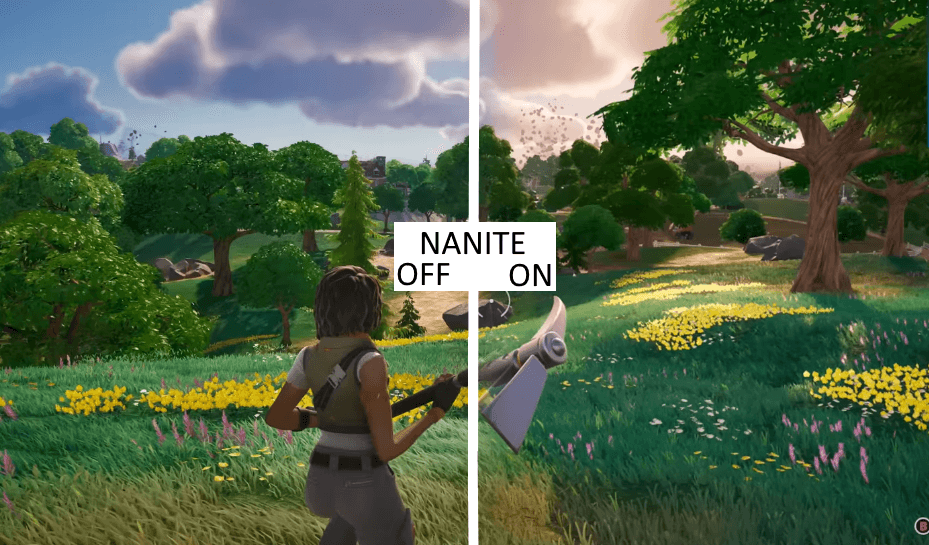
Then there’s Lumen, which fixed the other major problem. When you move a light, the shapes change rapidly. So, if you change the time of day, things will change on their own. Not anymore hope that everything will be okay by crossing your fingers.
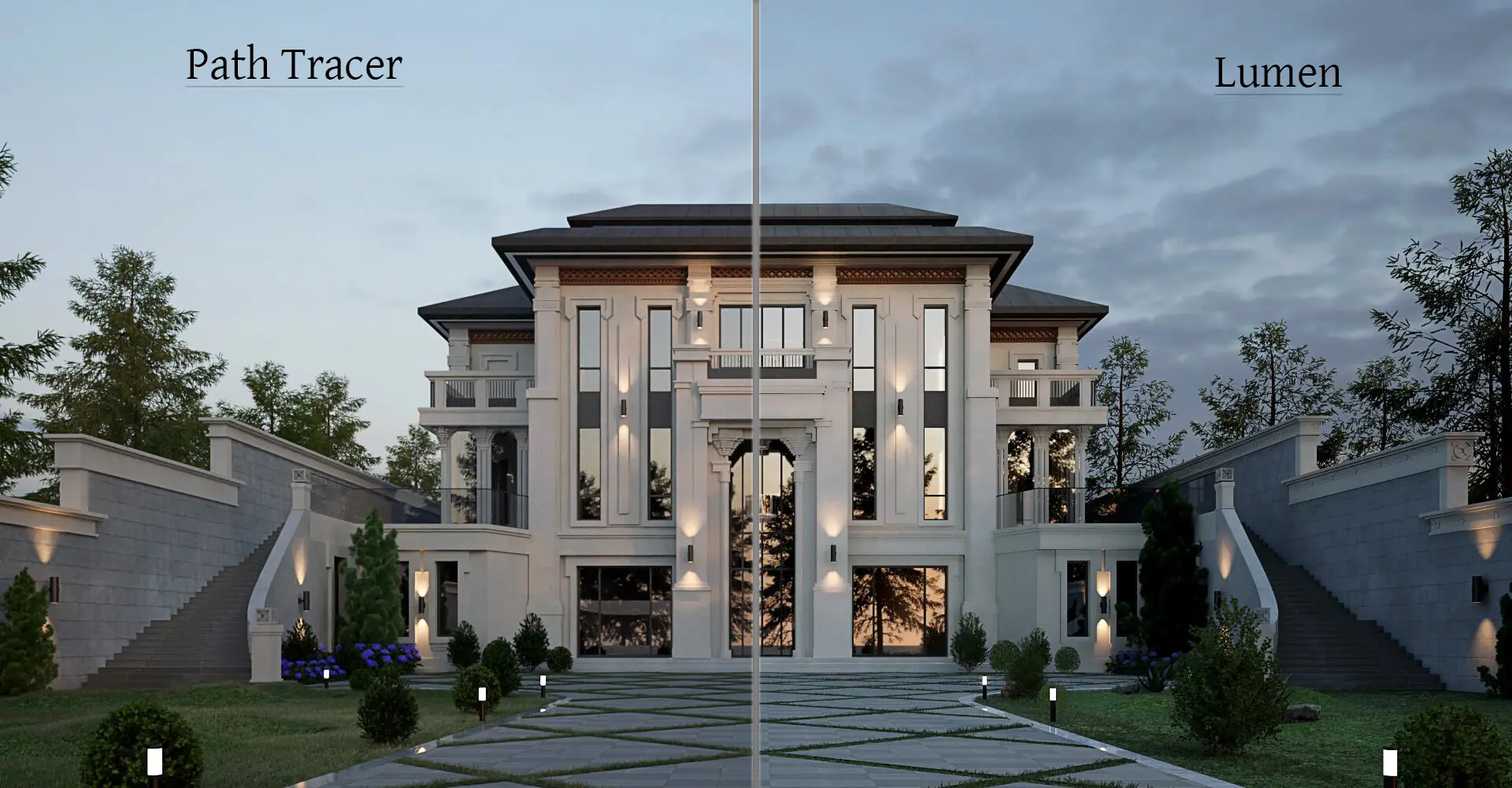
The cool thing about these tools is that they work well together. You get pictures that look like they belong in a movie and update immediately whenever you make a change.
Honestly, though, it wasn’t just the tech that made it unique. It brought back the imagination that artists had lost with UE5.
You naturally start to take bigger artistic chances when you can see professional results shortly afterward. Now that you can see them work, you try those crazy ideas you never thought you’d try before.
How UE5 Changed Animation For Everyone?
Enough technical talk. First, let’s look at what happened when people got UE5.
1. Film and TV Production
Who didn’t think the Mandalorian was an amazing creature? All of a sudden, things changed when they used UE5 and huge LED walls behind the players.
Filmmakers used to film everything in front of green screens and then spend months adding backgrounds afterward. Now they use UE5 to make whole worlds that are shown live on LED walls.
What changed is:
- Directors see exactly how scenes will look as they are filming.
- The actors don’t perform in empty green rooms; they do it in real places.
- There is real lighting, so it looks great.
- Changes happen fast while shooting, not months later.
The same thing was done in shows like House of the Dragon and Thor: Love and Thunder. It used to be very expensive to do virtual production, but now regular companies can do it without any problems.

2. Independent Animators
Solo artists started making movies that were as good as those in Hollywood from their homes.
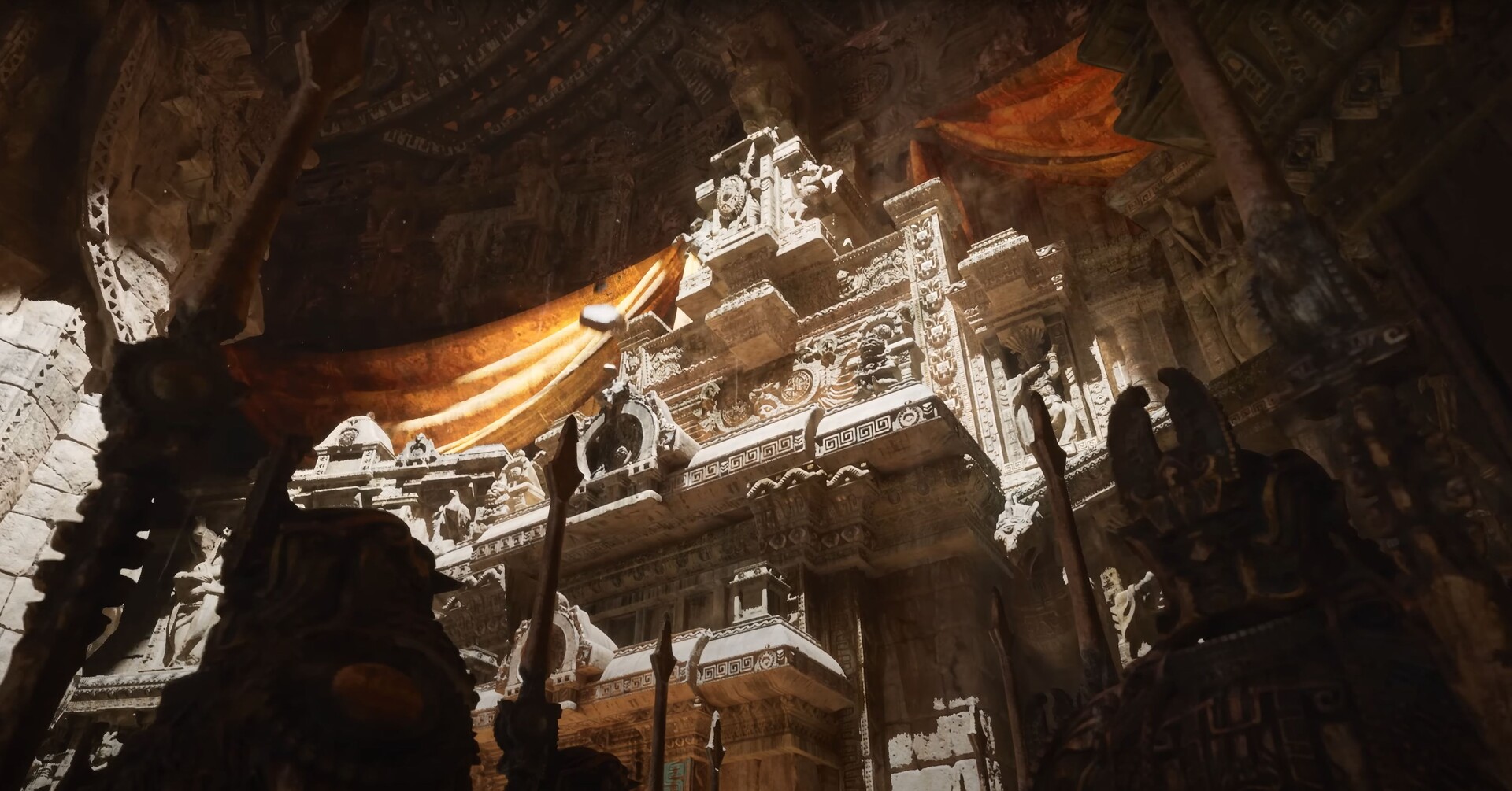
This animated short called “Lumen in the Land of Nanite” was made by one person using only UE5. And it’s as good as an Epic Games demo.
“The Heretic” by Unity is another great example. But wait, that was just a demo of their engine; UE5’s makers came back with even better solo projects like “Rebirth” and “Echo” that looked absolutely stunning.
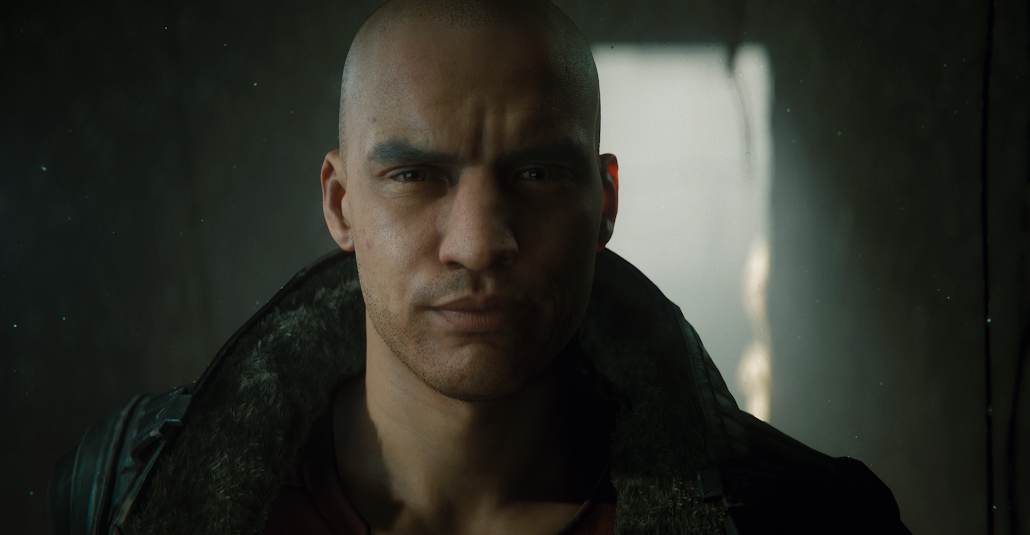
3. Gaming Industry
Movies and video games started to look the same. The Matrix Awakens tech demo definitely showed this.
People couldn’t believe it was running in real-time. Then games like Hellblade II and Fortnite’s shows highlighted this dramatic beauty while you were playing.
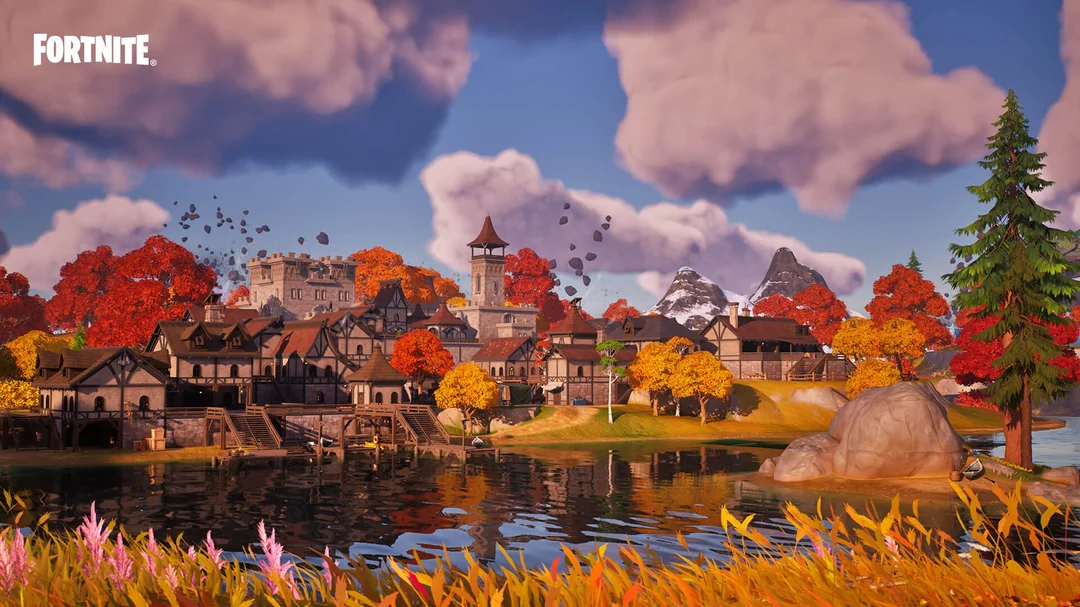
What went on:
- Real-time cutscenes play out during gameplay, and players can’t tell when the game turns into a movie.
- They make better games more quickly.
- There was no longer much of a line between games and movies.
Even mobile games started using UE5. The graphics in PUBG Mobile and Fortnite Mobile are now as good as they are on consoles.
Real-Time vs. Traditional Rendering: Which One Wins in 2025?
The fight is no longer fair. Now, real-time rendering wins almost all of the time.
Traditional rendering is still the best when:
- You need the ideal picture for movies
- Working with particle effects that are very complicated
- The client asks for the standard process in particular.
- You have endless money and time.
Real-Time Wins When:
- You need to see effects within minutes
- You’re making TV shows, ads, or content for the web.
- Your budget and schedule are important.
- You need the client’s OK at every step of the way.
What will happen in 2025? Almost all animation projects now use real-time rendering. Traditional drawing is no longer the usual choice; it’s becoming more of a specialty choice.
Even big movie companies use real-time for a lot of their finishing shots and to plan their scenes ahead of time.
5 Reasons to Switch from Unity to UE5 for Animation
Unity is great for many things, but when it comes to animation work, UE5 is simply in a different league.
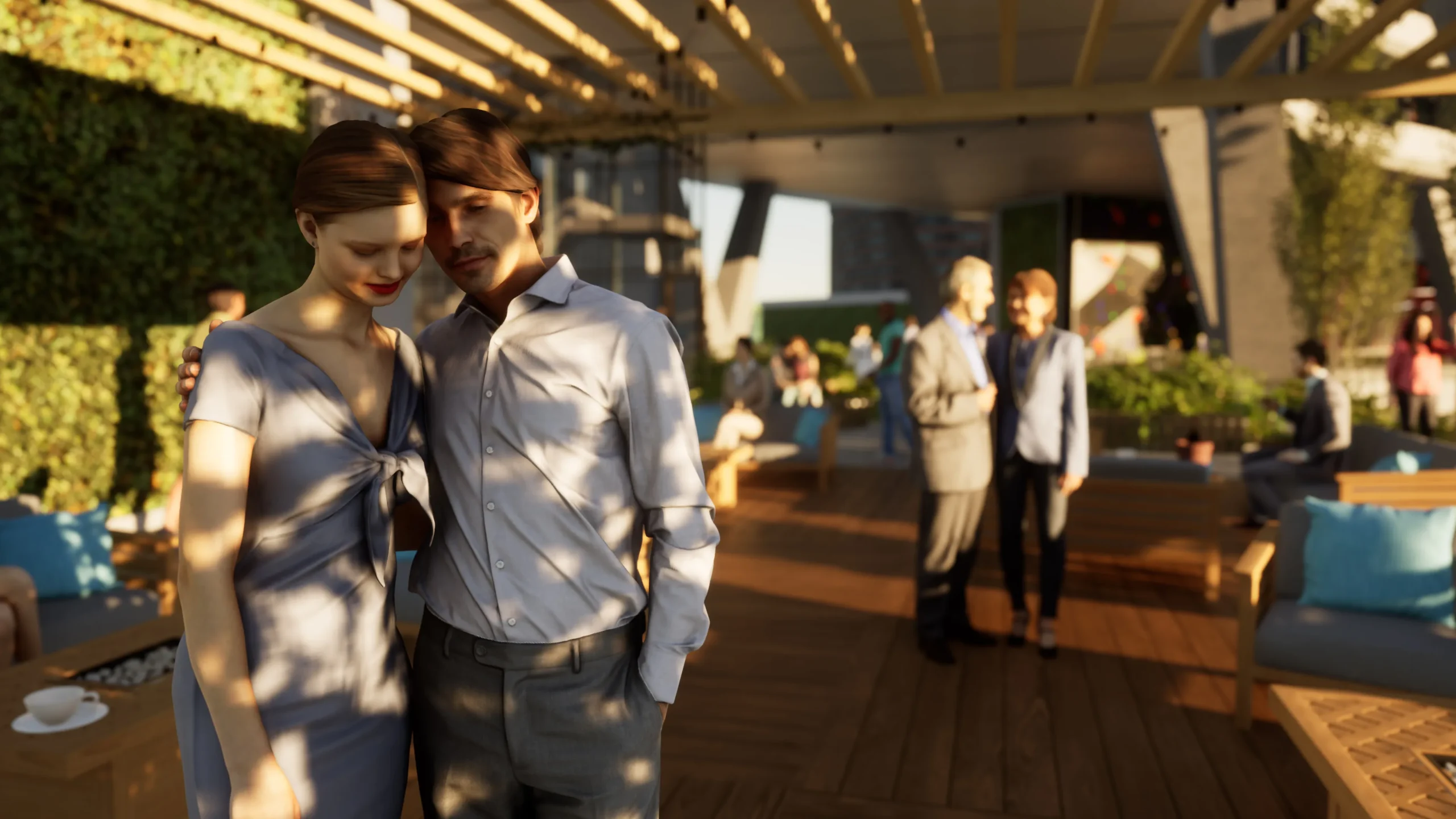
- Better lighting system: Lumen creates realistic lighting instantly, while Unity still needs lots of manual setup.
- Handles complex details: Nanite lets you use movie-quality assets that would crash Unity
- Industry standard: Disney, Netflix, and major studios chose UE5 for a reason
- Better learning resources: Epic created amazing free courses specifically for animators.
- Real-time cinematic quality: What you see is exactly what you get in the final render
The switch might take a few weeks to learn, but the results speak for themselves. When major animation studios switch over, that tells you everything.
When to Choose Something Else Instead of UE5?
UE5 isn’t perfect for everything:
- Simple 2D mobile games: Unity might be easier
- Complete beginners wanting free tools: Blender works fine
- Basic projects with tight budgets: other options exist
UE5 Hardware Requirements
UE5 is powerful, which means it’s also hungry for computer resources.
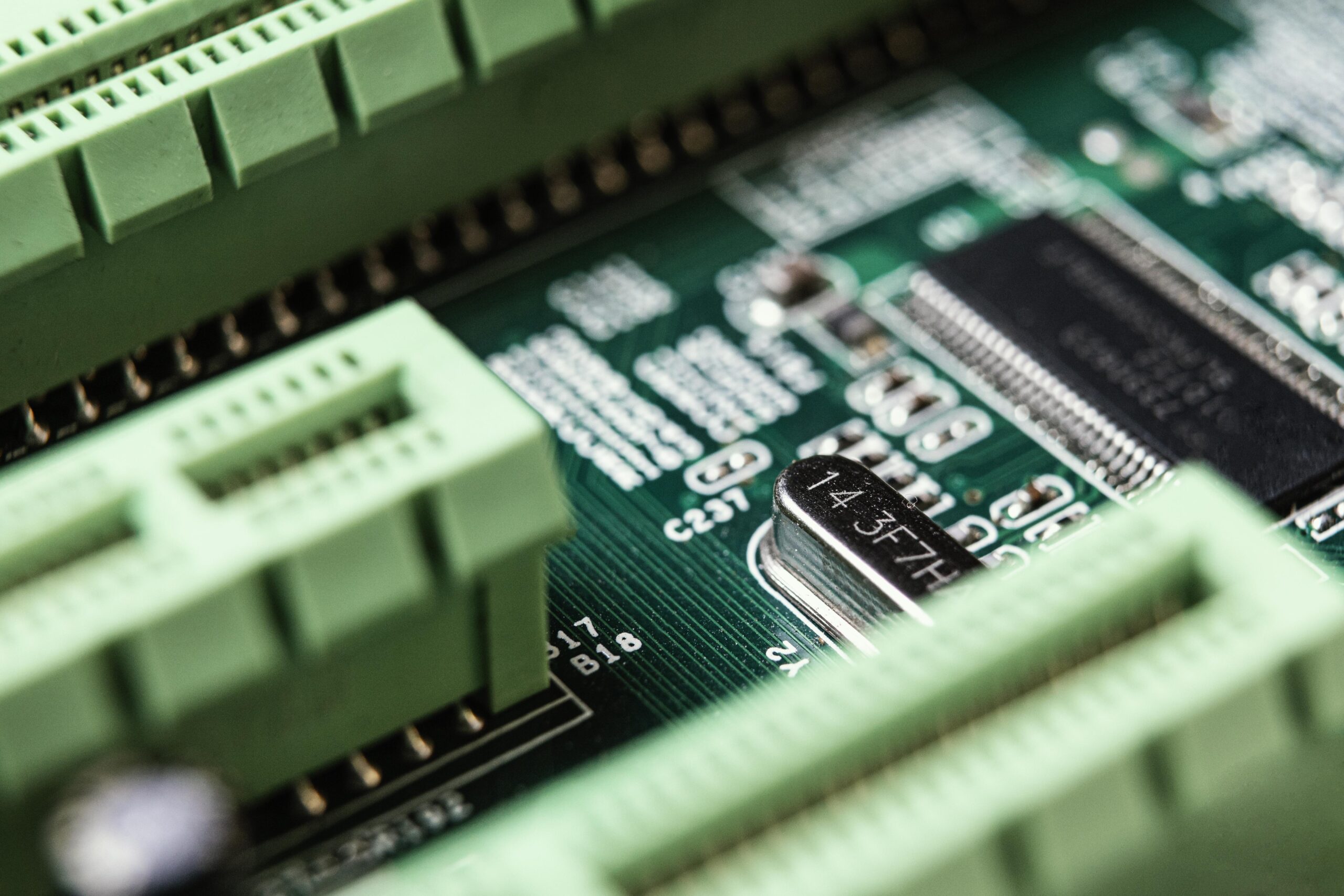
Minimum Requirements Include:
- Windows 10 64-bit (or macOS Big Sur)
- 12GB RAM (16GB is way better)
- DirectX 11 graphics card
- 100GB free storage space
What Works Well Is:
- 16GB+ RAM
- RTX 3060 or better graphics card
- SSD storage (makes a huge difference)
- Good CPU with 6+ cores
Can you start with less? Sure. But you’ll be frustrated with slow performance. A $1,200 gaming computer manages UE5 beautifully. What about your old laptop from 2018? Probably not so much.
Everything You Wished Someone Had Told You About Real-Time Animation
Really, no one tells the truth to those who are just starting out with real-time animation, so let us tell you what matters.
- The learning curve takes about 2 to 3 months to get used to.
- You’ll need good tools to get the most out of it.
- Traditional animation skills are still very important.
- Using real-time isn’t always necessary; sometimes, easy tools are enough.
What surprises you the most is that it’s very painfully slow to use standard graphics after going real-time. Once artists have seen quick feedback, they usually can’t go back.
No Experience? No Problem
Everyone asks us, “Is this too hard for beginners?” The answer is absolutely not. UE5 is actually more beginner-friendly than most people think.
Your Learning Path:
- Week 1-2: Download UE5, complete Epic’s “First Hour” tutorial
- Week 3-6: Follow along with basic lighting and camera courses
- Month 2: Create your first simple scene with moving objects
- Month 3: Start experimenting with your own creative ideas
Free Resources That Actually Help:
- Epic Games’ official learning platform
- YouTube channels like William Faucher and Ryan Laley
- UE5 Discord community (super helpful people)
- Reddit’s r/unrealengine subreddit
Most people feel confident after 3 months of casual learning. The key is starting with simple projects and building up slowly.
The Future of Real-Time Rendering Animation
The future looks absolutely wild, and honestly, we’re just getting started.
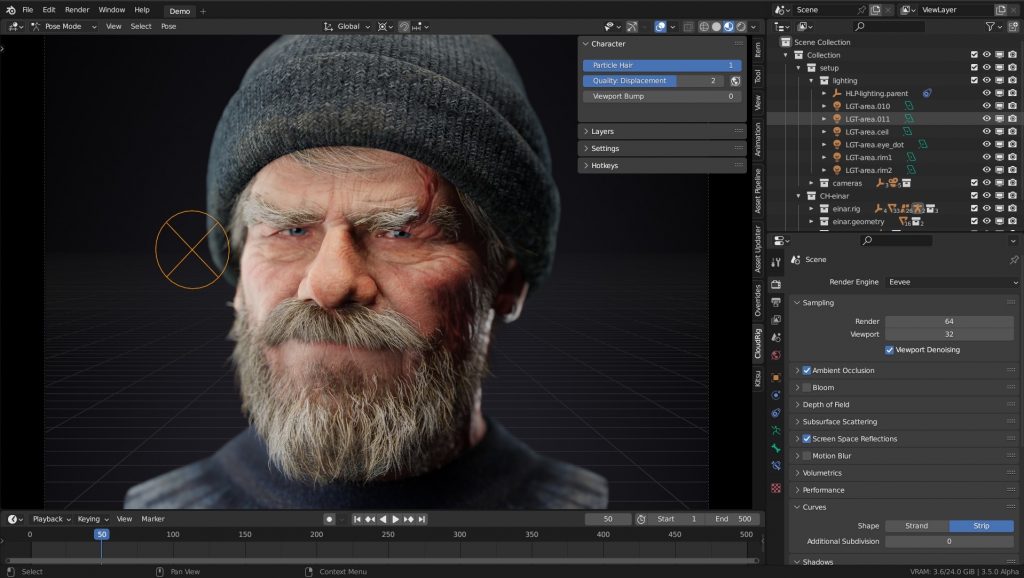
Epic Games keeps dropping amazing updates for UE5. They’re working on even better lighting systems and ways to handle massive worlds with zero loading times. But the really exciting stuff is how AI is starting to mix with real-time rendering.
Soon, AI will help create animations automatically. You’ll describe what you want, and the AI builds it for you in real-time.
We’re talking about AI that can:
- Generate character movements based on simple descriptions
- Create realistic environments from just text prompts
- Fix lighting and camera work automatically
- Speed up the boring technical stuff so you can focus on creativity
New industries are jumping on this train every month. Car companies now use UE5 to design vehicles, and Medical schools create training simulations. Even fashion brands show off clothes in virtual worlds.
You don’t even need a film degree to get started, since companies care more about what you can create than where you went to school.
The Animation Revolution Is Here
We went from animators waiting days for disappointing renders to seeing perfect results instantly while they work. UE5 didn’t just fix technical problems; it gave creativity back to artists and levelled the playing field completely.
Now, solo creators compete with Disney, small studios land Netflix contracts, and anyone with a decent computer can learn movie-quality animation skills. The future looks even more exciting with AI integration and new industries adopting real-time rendering every month.
